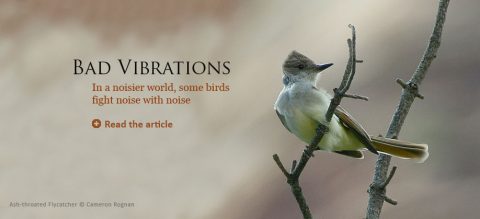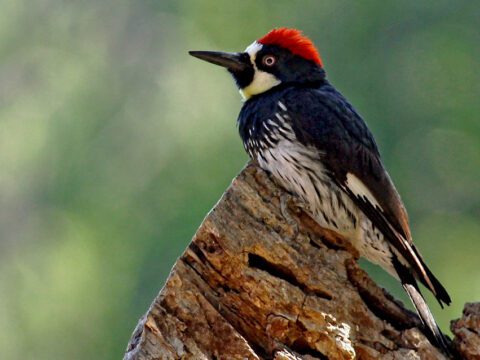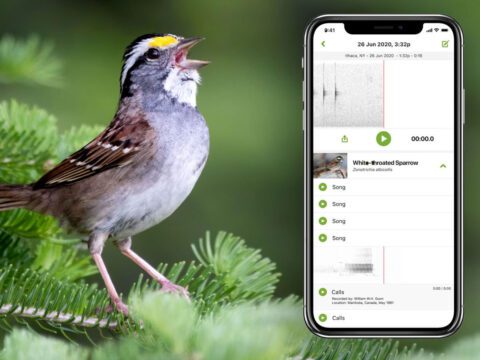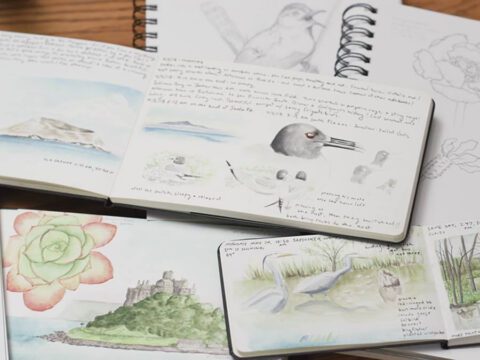Can We Save the Spoon-billed Sandpiper?
By David S. Wilcove; Photograph by Gerrit Vyn
July 15, 2011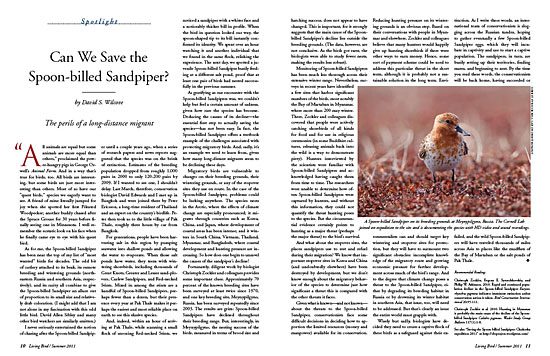
All animals are equal but some animals are more equal than others,” proclaimed the power- hungry pigs in George Orwell’s Animal Farm. And in a way that’s true for birds, too. All birds are interesting, but some birds are just more interesting than others. Most of us have our “quest birds,” species we eagerly want to see. A friend of mine literally jumped for joy when she spotted her first Pileated Woodpecker; another buddy chased after the Spruce Grouse for 30 years before finally seeing one in Minnesota. I well remember the ecstatic look on his face when he finally came eye to eye with his quest bird.
As for me, the Spoon-billed Sandpiper has been near the top of my list of “most wanted” birds for decades. The odd bit of cutlery attached to its beak, its remote breeding and wintering grounds (northeastern Russia and southern Asia, respectively), and its rarity all combine to give the Spoon-billed Sandpiper an allure out of proportion to its small size and relatively drab coloration. (I might add that I am not alone in my fascination with this odd little bird. David Allen Sibley and many other bird watchers are similarly smitten.)
I never seriously entertained the notion of chasing after the Spoon-billed Sandpiper until a couple years ago, when a series of research papers and news reports suggested that the species was on the brink of extinction. Estimates of the breeding population dropped from roughly 1,000 pairs in 2000 to only 120-200 pairs by 2009. If I wanted to see one, I shouldn’t delay. Last March, therefore, conservation biologist David Edwards and I met up in Bangkok and were joined there by Peter Ericsson, a long-time resident of Thailand and an expert on the country’s birdlife. Peter then took us to the little village of Pak Thale, roughly three hours by car from Bangkok.
For generations, people have been harvesting salt in this region by pumping seawater into shallow ponds and allowing the water to evaporate. When those salt ponds have water, they teem with wintering shorebirds, including thousands of Great Knots, Greater and Lesser sand-plovers, Curlew Sandpipers, and Red-necked Stints. Mixed in among the stints are a handful of Spoon-billed Sandpipers, perhaps fewer than a dozen, but their presence every year at Pak Thale makes it perhaps the easiest and most reliable place on earth to see this elusive species.
And, indeed, within an hour of arriving at Pak Thale, while scanning a small flock of snoozing Red-necked Stints, we noticed a sandpiper with a whiter face and a noticeably thicker bill in profile. When the bird in question looked our way, the spoon-shaped tip to its bill instantly confirmed its identity. We spent over an hour watching it and another individual that we found in the same flock, relishing the experience. The next day, we spotted a juvenile Spoon-billed Sandpiper busily feeding at a different salt pond, proof that at least one pair of birds had nested successfully in the previous summer.
As gratifying as our encounter with the Spoon-billed Sandpipers was, we couldn’t help but feel a certain amount of sadness, given how rare the species has become. Deducing the causes of its decline—the essential first step to actually saving the species—has not been easy. In fact, the Spoon-billed Sandpiper offers a textbook example of the challenges associated with protecting migratory birds. And, sadly, it’s an example we need to learn from, given how many long-distant migrants seem to be declining these days.
Migratory birds are vulnerable to changes on their breeding grounds, their wintering grounds, or any of the stopover sites they use en route. In the case of the Spoon-billed Sandpiper, problems could be lurking anywhere. The species nests in the Arctic, where the effects of climate change are especially pronounced; it migrates through countries such as Korea, China, and Japan, where development of coastal areas has been intense; and it winters in South China, Vietnam, Thailand, Myanmar, and Bangladesh, where coastal development and hunting pressure are increasing. So how does one begin to unravel the causes of the sandpiper’s decline?
Fortunately, diligent work by biologist Christoph Zockler and colleagues provides some important clues. Approximately 70 percent of the known breeding sites have been surveyed at least twice since 1970, and one key breeding site, Meynypilgyno, Russia, has been surveyed repeatedly since 2003. The results are grim: Spoon-billed Sandpipers have declined throughout their breeding range. But, interestingly, in Meynypilgyno, the nesting success of the birds, measured in terms of brood size and hatching success, does not appear to have changed. This is important, for it strongly suggests that the main cause of the Spoonbilled Sandpiper’s decline lies outside the breeding grounds. (The data, however, are not conclusive. As the birds got rarer, the biologists were able to study fewer nests, making the results less robust).
Monitoring of Spoon-billed Sandpipers has been much less thorough across their extensive winter range. Nevertheless, surveys in recent years have identified a few sites that harbor significant numbers of the birds, most notably the Bay of Martaban in Myanmar, where more than 200 may winter. There, Zockler and colleagues discovered that people were actively catching shorebirds of all kinds for food and for use in religious ceremonies (in some Buddhist cultures, releasing animals back into the wild is a way to demonstrate piety). Hunters interviewed by the scientists were familiar with Spoon-billed Sandpipers and acknowledged having caught them from time to time. The researchers were unable to determine how often Spoon-billed Sandpipers were captured by hunters, and without this information, they could not quantify the threat hunting poses to the species. But the circumstantial evidence certainly points to hunting as a major threat (perhaps the major threat) to the bird’s survival.
And what about the stopover sites, the places sandpipers use to rest and refuel during their migration? We know that important stopover sites in Korea and China (and undoubtedly elsewhere) have been destroyed by development, but we don’t know enough about the migratory behavior of the species to determine just how significant a threat this is compared with the other threats it faces.
Given what is known—and not known— about the threats to the Spoon-billed Sandpiper, conservationists face some difficult decisions in deciding how to apportion the limited resources (money and manpower) available for its conservation. Reducing hunting pressure on its wintering grounds is an obvious step. Based on their conversations with people in Myanmar and elsewhere, Zockler and colleagues believe that many hunters would happily give up hunting shorebirds if there were other ways to earn money. Hence, some sort of payment scheme could be used to address this particular threat in the short term, although it is probably not a sustainable solution in the long term. Environmentalists can and should target key wintering and stopover sites for protection, but they will have to surmount two significant obstacles: incomplete knowledge of the migratory route and growing economic pressure for further development across much of the bird’s range. And to the degree that climate change poses a threat to the Spoon-billed Sandpiper, either by degrading its breeding habitat in Russia or by drowning its winter habitat in southern Asia, that issue, too, will need to be addressed. But that’s clearly an issue the entire world must grapple with.
Wisely but sadly, biologists have decided they need to create a captive flock of these birds as a safeguard against their extinction. As I write these words, an international team of conservationists is slogging across the Russian tundra, hoping to gather eventually a few Spoon-billed Sandpiper eggs, which they will incubate in captivity and use to start a captive population. The sandpipers, in turn, are busily setting up their territories, finding mates, and beginning to nest. By the time you read these words, the conservationists will be back home, having succeeded or failed, and the wild Spoon-billed Sandpipers will have traveled thousands of miles across Asia to places like the mudflats of the Bay of Martaban or the salt ponds of Pak Thale.

All About Birds
is a free resource
Available for everyone,
funded by donors like you
American Kestrel by Blair Dudeck / Macaulay Library
